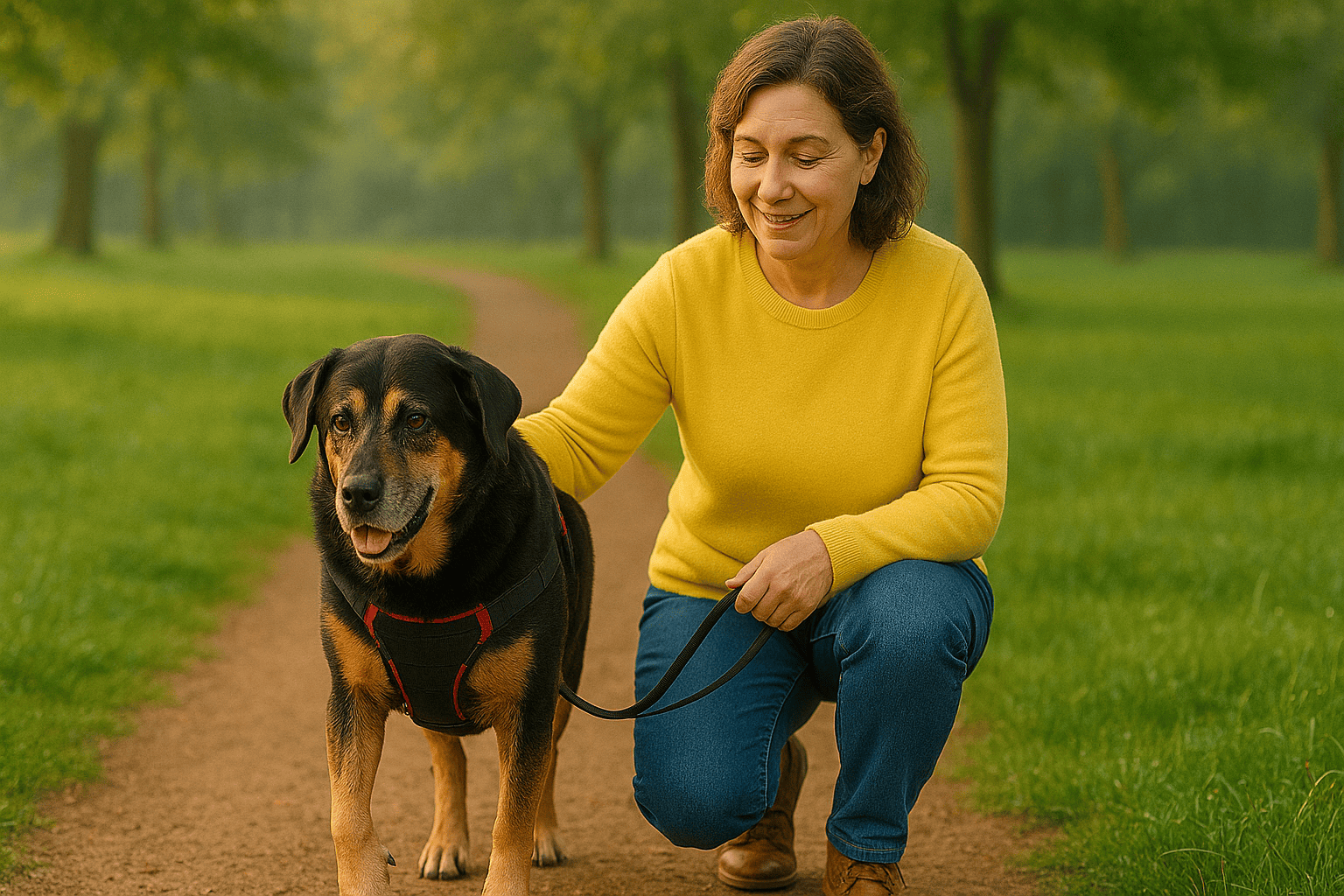Gentle walks can make a big difference for senior dogs with arthritis. Learn how to plan safe, comfortable outings that support your dog’s mobility and happiness.
Discover tips for safe walks with senior dogs suffering from arthritis. Help your dog stay active, manage joint pain, and enjoy daily strolls without discomfort.
Why Walking Matters for Senior Dogs with Arthritis
Daily walks are important for maintaining muscle strength, joint flexibility, and a positive mood in senior dogs. However, arthritis can make walking uncomfortable if not approached carefully. Adapting your walking routine can help your dog stay active without adding stress to painful joints.
7 Essential Tips for Safe and Comfortable Walks
1. Choose Soft, Even Surfaces
Opt for grassy parks, dirt paths, or trails instead of concrete sidewalks. Softer surfaces cushion each step and reduce the impact on your dog’s joints.
2. Keep Walks Short and Sweet
Instead of long walks, plan multiple short outings during the day. Short sessions help maintain mobility without overexerting your dog.
3. Warm Up and Cool Down
Begin with a few gentle stretches or a slow pace to warm up your dog’s muscles. End each walk with a slower, calming pace to cool down and prevent stiffness.
4. Monitor the Weather
Avoid walking during extreme heat or cold. Arthritic joints are more sensitive to temperature changes, and extreme weather can worsen pain.
5. Use a Supportive Harness
A well-fitted harness offers better support than a collar, especially for dogs with arthritis. Look for harnesses designed for mobility support.
6. Watch for Signs of Fatigue or Pain
Be alert for limping, slowing down, or hesitation. If your dog shows any discomfort, stop the walk and allow time for rest.
7. Stay Consistent
Consistency is key. Regular short walks are better than occasional long ones. Create a daily walking routine that suits your dog’s energy and health.
Bonus Tip: Bring Treats and Encourage Positivity
Make walking a positive experience. Bring along healthy treats to reward your dog, and celebrate even small successes like reaching a favorite spot.
When to Consult Your Vet
Before making changes to your senior dog’s exercise routine, always consult your veterinarian. They can recommend personalized walking guidelines and suggest additional treatments, like physical therapy or joint supplements.
Enjoy the Journey Together
Walking is more than just exercise; it’s a way to bond, explore, and share quality time. With a few mindful adjustments, your senior dog can continue enjoying walks while managing arthritis safely and happily.

